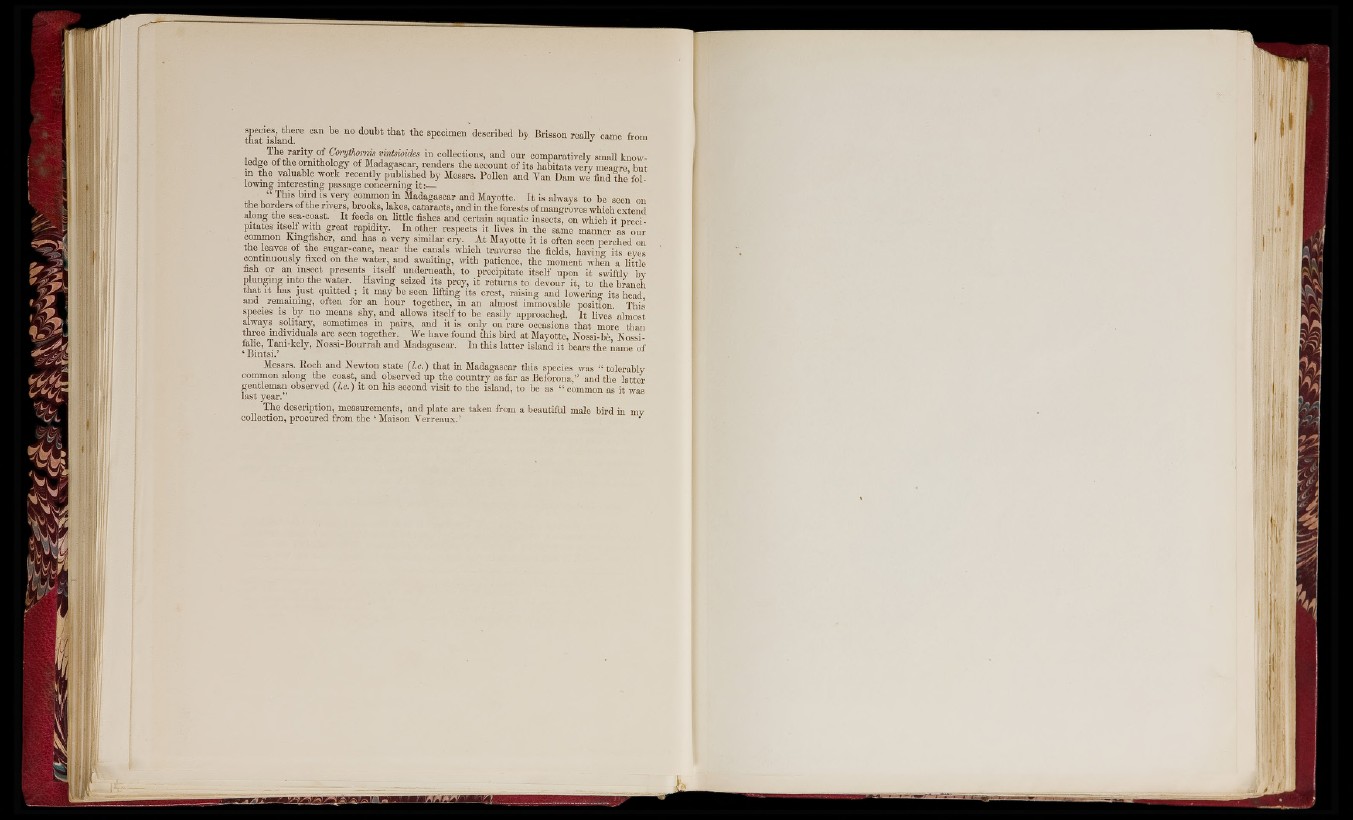
i t o f S a * d *“* specimen described by Brisson read y came from
T h e r a r ity of Coiytlwrnis mnUioides in collections, and o u r comparatively small knowledge
o f th e o rnith o lo g y o f Madagascar-, ren d e rs th e account of i ts h ab ita ts very meao-re b u t
m th e valuable work rec en tly published b y Messrs. Po llen and Van Dam we find the’fol-
lowmg in te res tm g passage concerning i t:__
re , “ “ Madagascar and Mayotte. I t is always to be seen on
th e h e rd e rs o f th e rivers, brooks, lakes, c ataracts, aud in the forests o f mangroves which extend
along th e sea-coast. I t feeds on little fishes and c erta in aquatic insects, on which i t p re c ip
ita tes itseli with g re a t rap id ity . In o th er respects it lives in tlie same manner as o ur
common Kingfisher, an d ha s a v e ry similar cry. A t Mayotte i t is often seen perched on
th e leaves o f th e sugar-cane, n e a r th e canals which trav e rse th e fields haviuff its eves
co n tin u o u sly fixed on the wa te r, and awaiting, -vrith patience, the moment w h in a little
fish o r an insect p resen ts its e lf u n d e rn eath , to p recipitate its e lf upon it swiftly by
p lu n g in g in to tlie water. Having seized its prey, i t re tu rn s to devour it, to the branch
th a t I t has ju s t q u itted ; i t may be seen liftin g its crest, raising and lowermo- its head
and remammg, often for an h o u r to g eth er, in an almost immovable position This
species is b y no means shy, and allows its e lf to be easily approached, i t lives’ almost
always solitary, sometimes in p a irs, and i t is only on rare occasions th a t more than
th re e m dm d u a ls a re seen to g eth e r. We have found th is b ird a t Mayotte, Nossi-be Nossi-
ialie, Tani-kely, No ssi-B o u rrah an d Madagascar. In th is la tte r island i t bears the name of
‘ B in ts i.’
Messrs. Rocb and Newton sta te (I.e.) tb a t in Madagascar th is species was “ tolerably
common along tbe coast, au d observed u p th e co u n try as far as Beforoiia,” and tbe la ttcr
gentleman observed (Lc.) i t on his second v isit to tbe island, to be ns “ common as it was
last y e a r.”
The description, measurements, an d p late a re taken from a beautiful male bird in my
collection, procured from tbe ‘ Maison V e rreau x .’